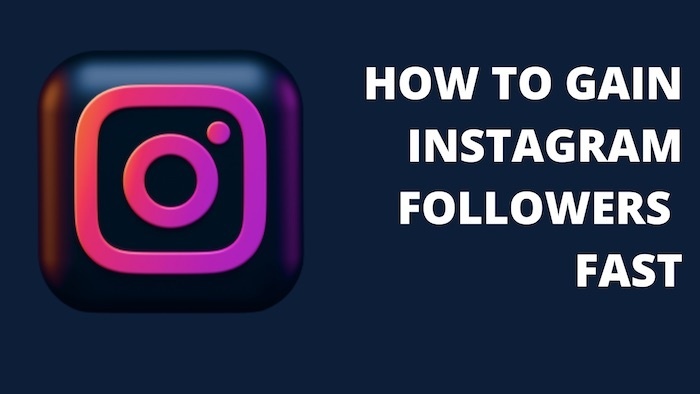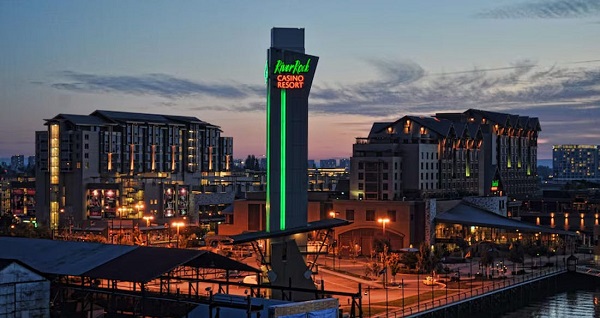Also Interesting
A STEP-BY-STEP GUIDE ON HOW TO GAIN INSTAGRAM FOLLOWERS FAST

Instagram has quickly evolved from its original perception as a friendly app for youngsters to a real content promoting, sale, device management, and community building tool for individuals and brands. It’s one of the most popular long-distance social networking places in the world, with more than 200 million active monthly users exchanging 60 million pictures and 1.6 billion interests every day. If your Instagram influence isn’t as strong as you believe, now could be a good time to work out how to improve your strategies for having real engagement and buy Instagram followers. The larger your crowd grows, the more opportunities you’ll have to attract customers and provide them with exclusive experiences. Begin developing your identity in the right direction with these Instagram tips for increasing followers.
- Make a unique hashtag.
A dedicated, heritage, or marked hashtag allows you to essentially create an array of your best content. When a prospective follower finds you from another extremely concentrated on tag, they will undoubtedly follow you and see your top posts. You should also try having an unique tag for all of your Instagram marketing activities. This is sometimes a superior option because it often feels less constrained than using anything more explicit to your company, for example, your organization name. As a result, campaign hashtags are often used by Instagram followers, which attracts the attention of their groups. If they share your interests, they will start following you as well.
- Cross-promote your special hashtag.
It’s great that you created a hashtag for your organization, but who knows who would use it to spread content about you? Make sure it’s in your profile but take the game off and have it imprinted on your records, ads, shop signs, and other relevant times. If you’re on the radio or TV, tell people to use your hashtag. Incorporate online and offline missions by ensuring it’s reported on the other media accounts, website, and email impacts. Don’t just assume that people would find it.
- Use hashtags that are exclusive to the field.
You need followers who are enthusiastic about what you do and hold. Using words that are not exclusive to the field can result in a small number of followers. As a result, you can use hashtags in your posts that your target audience can specifically search for. The more explicit you are, the more interested people you will get, and the more often they will become devout followers. Furthermore, using more specific brands reduces the number of competitors vying for the followers of related individuals you’re interested in. As a result, the data would be easier to find and, as a result, easier to track.
- Try not to be too monotonous.
When it comes to Instagram caption ideas, you can look beyond the single term, straightforward hashtags. Of course, you can use those as well, but mix it up and use hashtags to share a portion of your post. Be funny, surprising, or silly – just don’t be BORING. WeWork, a community-oriented workspace organization, excels at this, and they add a fantastic mix of Instagram material as well.
- Get to know the surroundings.
By going to the hunt page and selecting the Places tab, you can see what’s going on in a specific territory (say, your area, a city you’re working on promotions, or even an event in a specific area). Then, type for the sake of the location to see all geotagged posts for that location.
- Begin the discussion
Individuals are continuing to use social media platforms as a point of touch with brands, regardless of whether it is for spontaneous queries and discussion, real customer service inquiries, or acclaim for their top brands and products. Furthermore, you should be powerful and accessible on Instagram for your followers. Attempt to respond to as many questions or comments as possible, as it could be the difference between gaining another consumer, follower, or strengthening your interaction with your viewer. It is critical to obtain the care and consistency required to convert a visitor to your profile into an adherent.
- Thank your Instagram followers.
To summaries, when you please your Instagram followers, you see the outcome in community growth. We’ve given you a lot of ideas for conceptualizing and planning content, so make them a habit that feels authentic to your picture personality. As a result, avoid being needy, deal-driven, or standardized.
- Create your own Instagram appearance.
It’s human nature to want to blend in, but on Instagram, you need to stand out. Frooti, an Indian refreshment company, has developed an especially remarkable visual substance theme, which is immediately noticeable if a customer sees a Frooti message in their newsfeed.
CONCLUSION
For certain information, this entails sprinkling in messages that are genuinely meant to bring a smile to followers’ faces and build professional relationships. Remember to provide content to your followers as if they had been friends on your own feed: this may include uploading videos, rousing content, or simply re-sharing interesting photos or fine art (all properly attributed, of course) that will provide your followers a mental break during the day.
Also Interesting
From Coast to Coast: Inside Canada’s Gambling Culture

Just recently, Statista released a report claiming that the Canadian casino market could hit US$9.57 billion by the end of 2025. If things go well for this sector, it could continue growing by a CAGR of 2.95%, translating to a market size of about US$17.51 billion by 2029. This is just to show you how gambling has become ingrained in this country’s culture.
And while gambling might not be the first thing that comes to mind when you think of Canada, this country’s residents have been engaging in games of chance since time immemorial. Looking at the statistics, studies show that close to six in ten Canadians participate in some kind of gambling.
And in this digital age, accessing gambling experiences has never been as convenient. Can you imagine that, by simply clicking a few buttons on their phones, players can access the best online gambling sites from anywhere at any time? Considering all these factors, you definitely want to stay around and explore this colourful world.
Where It All Began
As already mentioned, gambling is not a thing of yesterday in Canada. Indigenous people would engage in the Slahal game using the foreleg bone of a deer or similar animal. There were two sets of bones: one striped and another unstripped.
The game involved players singing songs while hiding the striped and unstriped bones in their hands. An opposing team would try to guess the hand holding the unstripped bone, and if they guessed right, they took the bones. If their guess was wrong, they handed over one of their sticks, which they used for scoring. This game would continue until one of the teams had all the scoring sticks.
After several years, colonists’ gambling games, such as dice games, came to the scene. This was followed by changes in regulations, which dramatically impacted the country’s gambling culture. A good example is when the government enacted the Canadian Criminal Code in 1892 to prohibit gambling games. However, the following years saw some games like raffles excluded. In 1920, racetrack betting using the pari-mutuel system was reintroduced, and certain games of chance were permitted at agricultural fairs and exhibitions.
Other major shake-ups came in 1938, when Canada allowed games of chance at bona fide social clubs. About 16 years later, the three-card monte, which was becoming exceedingly popular, was added to the list of prohibited games. Then came the late 1960s when the government delegated the responsibility of running lotteries to individual federal and provincial governments. These changes did not stop here, as more amendments were made over the following years, causing Canada’s gambling ecosystem to be what it is today.
Popular Physical Destinations
After the first land-based casino launched in 1989 in Winnipeg, many others would follow. Now, if you want to immerse yourself in some table games, there are over 115 options at Casino de Montreal. You’ll also find more than 3,000 slot game variations, video poker and electronic gaming machines like the electronic Texas Hold’em poker table to keep you engaged. Surprisingly, Casino de Montreal welcomes over seven million visitors annually, highlighting its undisputed reputation in Canada’s culture.
Over on the west coast is the Parq Casino, a 72000 square-foot casino spread across two floors. You may also want to take advantage of this destination’s eight award-winning restaurants and a rooftop park. If you want an exclusive experience, luxury hotels at this location will offer just that.
Then there’s Casino Nova Scotia in Halifax, where the vibe shifts again. Besides the various casino game variations, the venue embraces a maritime spirit with seafood-focused menus, music concerts and a more relaxed, welcoming atmosphere. If you intend to combine your casino gaming with some electrifying live performances at this venue, you do not want to miss the ‘Queen: It’s a Kinda Magic’ concert, which will be held on August 31, 2025.
The Age of the Internet
Like other nations, the Canadian gambling culture has not escaped the online platforms’ wave. As a result, players can now access entertainment regardless of their location – whether in Kugluktuk, Ketchikan or Nova Scotia. All they need is proper internet connectivity and a smartphone to get started.
This convenience is part of why bridgerliner.com expects the online casino market revenue to hit $3.7 billion by the end of this year (2025), a compound yearly growth rate of more than 6% since 2020. The exciting part is how these gambling providers work hard to ensure the online experiences are as realistic as possible. That’s why you may have seen most of them integrating live casino games into their product portfolios.
Besides live games, operators have also been taking advantage of technologies like artificial intelligence to improve customer experience. By using AI, an operator can monitor your online activity and extract meaningful information about your preferences that can help provide more relevant experiences. This helps to keep players more connected, as it presents the operator as caring and customer-focused. According to WiserNotify, customizing encounters like this can actually increase retention capacity by as much as 44%.
Seeing a bigger percentage of Canadians gambling shouldn’t be surprising. From the ancient days of Slahal to the contemporary age of the internet, games of chance have been adjusting and have become more accessible, allowing more Canadians to participate. Physical destinations also offer beyond-gambling experiences that keep locals and visitors returning for more, further explaining why this practice is deep-rooted in the country’s culture.
Business
Younger Casino Bettors Are Upping the Ante on Risky Gambling in British Columbia, Documents Show

By Stanley Tromp
Younger casino players in British Columbia are significantly increasing high-risk gambling behaviours, while “gambling literacy” has declined over the past year, according to data from the province’s gaming provider, the BC Lottery Corporation.
This and other concerns were outlined in the Player Health Tracker Report by Ipsos Research, released in July 2024 and commissioned by BCLC. The Bureau obtained six reports totaling 903 pages through a Freedom of Information request. The findings point to an alarming rise in high-risk gambling among younger bettors in the second quarter of fiscal 2024/2025—raising fresh questions for BCLC, an agency previously criticized for prioritizing revenue over social responsibility.
“Younger players are known to display more high-risk behaviours, believe more strongly in gambling myths, and play more games, especially high-risk ones,” the report said.
To address this, Ipsos recommended that “BCLC could consider targeting younger casino players in its campaigns geared toward casino players, with messaging related to increasing gambling literacy and promoting safer gaming.”
The concerning trend comes under the watch of Premier David Eby. In 2018, when Eby served as B.C.’s Attorney General, he told CBC that his government should be doing much more to help gambling addicts.
Eby also pointed out that his NDP government had moved responsibility for the gaming industry from Finance to the Attorney General’s office in 2017, because “the B.C. Lottery Corporation should not be responsible for both revenue generation and regulation.” That decision was later reversed, with oversight returning to the Finance Ministry.
In a warning back in 2020, an internal briefing note from the B.C. Ministry of Public Safety highlighted the “rapidly changing” online betting market as a source of mounting risks.
The note said more people were gambling “in an environment that may not have appropriate responsible gambling and integrity controls, that may allow minors to gamble, and that may carry an increased risk for fraud and money laundering.”
The new survey results were based on 498 interviews with adults in British Columbia who had played at least one BCLC game in the past year. Three of the reports track changes in gambling behaviours from the first to the third quarter of fiscal year 2024/25—that is, from April to December 2024.
PlayNow.com is BCLC’s internet gambling platform, featuring online table games, slots, and sports betting. It was launched in 2004 and later expanded to other western provinces.
In the first quarter (April–June 2024), “PGSI behaviours increased significantly among PlayNow players,” according to the Ipsos report. (The Problem Gambling Severity Index, or PGSI, is a nine-item self-report scale measuring risky gambling behaviours in the general population.)
The highest-risk PlayNow users were identified as young urban males—“the least likely to feel responsible for what happens to them.” Their gambling motivations include “feeling tense and wanting to be in the zone,” factors not observed in other segments. They were also found to be the least likely to engage in responsible play, despite recognizing risks in their own behaviour.
In the second quarter (July–September 2024), PlayNow players’ high-risk PGSI scores trended upward, while gambling literacy declined. Ipsos warned: “Given that PlayNow players remain a more at-risk group, BCLC could focus on reinforcing gambling literacy and safer gambling behaviours.” It advised close monitoring to identify whether preventative actions were needed.
In the third quarter (October–December 2024), Ipsos observed a tentative improvement: “High-risk PGSI has declined significantly among PlayNow players, although the shift should be interpreted with caution due to lower base sizes… high gambling literacy has rebounded.”
Overall, Ipsos found that online players demonstrated stronger belief in gambling myths and more problematic behaviours than retail players. Their pre-commitment habits—such as setting spending limits—and overall gambling literacy were weaker by comparison.
Sports betting remained a distinct concern. “Given that online sports bettors continue to be a higher-risk group,” Ipsos wrote, “BCLC could benefit from maintaining targeted initiatives that tackle the specific challenges of sports betting and promote safer gambling practices, especially during major sporting events such as the Super Bowl, March Madness, and the NHL and NBA play-offs in the coming months.”
Casino players were a more at-risk group in the first quarter. In the second quarter, there was a significant drop in gambling literacy among this segment. But by the third quarter, Ipsos reported some improvements: “Casino players display some improvement in high-risk PGSI, high pre-commitment, and high gambling literacy this quarter.” Ipsos attributed this to a higher proportion of casual casino players compared to moderate or high-frequency players.
The public was also surveyed on which casinos or gaming community centres they had visited in the past 12 months. River Rock Casino in Richmond was the most reported location, with 27% of respondents naming it. This was followed by Vancouver’s Parq Casino (24%), Burnaby’s Grand Villa Casino (23%), and Coquitlam’s Hard Rock Casino (20%). Other B.C. casinos saw significantly lower visitation numbers.
However, from January to December 2024, “casino players are significantly more likely to believe several gambling myths compared to last year,” Ipsos warned. These included beliefs that: (1) casino staff can change game outcomes, (2) some slot machines are “hot” and due for a big jackpot, and (3) a payout rate of 85% means players will get back $85 of every $100 spent.
Ipsos cautioned that any gains in safer gambling behaviours and literacy may not be sustainable if belief in these myths continues to grow. It recommended that BCLC intensify efforts to dispel such misinformation.
Keno players were also flagged as high-risk during the second and third quarters, and showed low gambling literacy. “When looking at product cross-play, most Keno online players also play Keno at retail locations, and thus online players also exhibit a more at-risk profile,” Ipsos reported. (In February 2024, a B.C. player won $1 million playing Keno—the largest payout in BCLC history.)
BCLC has stated that its GameSense program provides players with information about how gambling works and offers tools to support informed decisions. The program aims to improve gambling literacy by helping players understand the odds of winning, distinguish between chance- and skill-based games, dispel common myths, and locate available resources.
However, in the second quarter, pollsters found that “awareness of a safer gambling education program in BC significantly decreased, as did awareness of the GameSense program across all business units.” In the third quarter, results were mixed: awareness of a safer gambling education program improved, and GameSense name recognition held steady, but both familiarity with and usage of the program declined.
The Bureau also obtained BCLC’s Key Performance Indicator (KPI) Tracker reports by Harris Insights for November 2024 (Q2) and February 2025 (Q3). Many pages were redacted by BCLC on the grounds that their release would cause financial harm.
These tracker documents monitor the corporation’s core business indicators and are reported to shareholders in annual statements and service plans. They are also used internally to evaluate performance across business units.
The Q2 report noted that “lottery-only players are declining and shifting to including casino and PlayNow games.” It also found that trust in BCLC games among facility players was significantly higher that quarter. Notably, PlayNow.com sports bettors used illegal betting websites significantly less in Q2 compared to Q1.
In Q3, cross-play between lottery, casino, and PlayNow increased from FY2023/24 to FY2024/25, as did the number of casual casino players and overall participation on PlayNow. At the same time, casual lottery play—such as Lotto 6/49, Lotto Max, Daily Grand, pull tabs, and scratch tickets—declined from Q2 back to Q1 FY2024/25 levels. Ipsos attributed this drop mainly to a loss of casual retail players, although overall lottery participation over the past year remained stable.
Finally, The Bureau reviewed a December 2024 report on BCLC’s “Social Purpose and Brand,” prepared by Unity Insights and Angus Reid.
Their survey data showed that core players across all BCLC facilities—casinos, community gaming centres, and bingo halls—had increased quarter-over-quarter. However, PlayNow sports bettors were increasingly using other websites for wagering, and the number of users betting exclusively on PlayNow declined.
The report also evaluated BCLC’s Integrated Enterprise Strategy, which aims to “increase the positive community and economic impact of gambling entertainment… and to leverage the BCLC brand to bring the commitment to social purpose to life.”
“Generally, consumers seem to articulate a sense of skepticism when it comes to any organization claiming to provide social benefits,” the pollsters wrote. “Virtue signaling was brought up in a negative light (moral grandstanding), where many did not understand how an organization could exist to provide social benefits while balancing profit generation.”
The report posed a direct challenge to BCLC’s leadership: What is the goal of its Social Purpose platform? “Are we trying to use our commitment to social purpose as a lever for acquisition, or is this truly about uplifting a social cause regardless of the business outcome?”
The authors suggested reframing the approach to center on the public. “BCLC players are committed to social purpose, and we thank them for that,” they wrote—before floating a new brand slogan: “BCLC = British Columbians Love Community.”
Stanley Tromp is a graduate of the University of British Columbia Political Science department and an expert on Freedom of Information.
The Bureau is a reader-supported publication.
To receive new posts and support my work, consider becoming a free or paid subscriber.
Invite your friends and earn rewards
-

 Brownstone Institute2 days ago
Brownstone Institute2 days agoFDA Exposed: Hundreds of Drugs Approved without Proof They Work
-

 Energy1 day ago
Energy1 day agoChina undermining American energy independence, report says
-

 Business1 day ago
Business1 day agoTrump on Canada tariff deadline: ‘We can do whatever we want’
-

 Automotive1 day ago
Automotive1 day agoElectric vehicle sales are falling hard in BC, and it is time to recognize reality.
-

 Business1 day ago
Business1 day agoEurope backs off greenwashing rules — Canada should take note
-

 Automotive1 day ago
Automotive1 day agoPower Struggle: Electric vehicles and reality
-

 Business7 hours ago
Business7 hours agoCanada Caves: Carney ditches digital services tax after criticism from Trump
-

 Business7 hours ago
Business7 hours agoMassive government child-care plan wreaking havoc across Ontario







